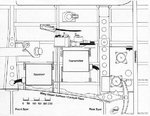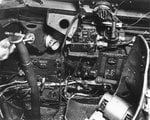Erich
the old Sage
too big, too bulky not enough time, the TA and the 262 would of been used full time in the LW arsenal and probably 2 other jets during 1946 if it was to be, this is all recorded in LW documentation towards wars end. buried at the Freiburg archiv's incase those wish to visit and really explore, but first one must find the RL numerations to proceed, don't ask me, as the Do does not interest me in the slightest but the info is there


